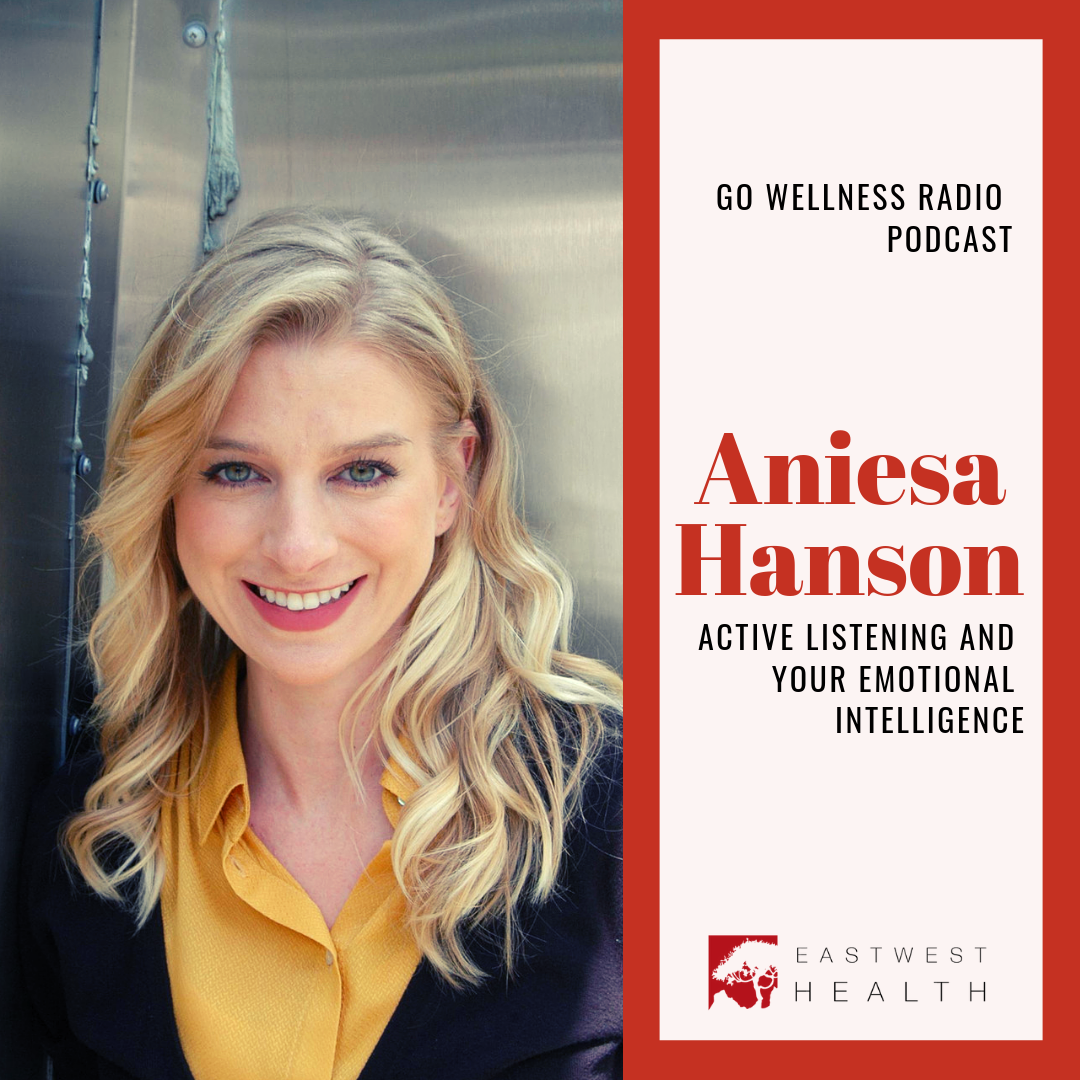ACTIVE LISTENING?
It requires that the listener fully concentrate, understand, respond and then remember what is being said.
Regan sat down with licensed therapist Aniesa Hanson to talk about active listening and emotional intelligence.
Who is Aniesa Hanson
 Aniesa wants to empower people to live their best life NOW. She knows that in order to have the best life, you have to let go of what is not working for you. Her process combines psychology, mindfulness, and coaching techniques to achieve real, lasting change in people’s lives. Because what’s the point of change if it doesn’t stick?
Aniesa wants to empower people to live their best life NOW. She knows that in order to have the best life, you have to let go of what is not working for you. Her process combines psychology, mindfulness, and coaching techniques to achieve real, lasting change in people’s lives. Because what’s the point of change if it doesn’t stick?
She has been featured as an expert therapist in Reader’s Digest, U.S. World News, PsychologyToday, and many others.
One of the biggest problems Aniesa sees in those she counsels is self-worth and self-confidence. While she works a lot with people’s relationships and their anxieties along with personal growth, she also likes to whittle that down to what the root cause of the issues is, and typically the root of these other issues tends to be how that person feels about themselves and how they feel about others.
Active listening is about Communication, not just hearing what someone else says.
What is Active Listening
Active listening is full body listening. Are you using all five senses? Or are you being passive with what is being communicated to you? Are you being reactionary? Waiting to respond? That is not active listening either. Active listening is being completely attentive, with eye contact, no distractions, your posture is open, you’re not multitasking, or interjecting. You are also allowing space between what someone is telling you, and your response.
Active listening is a marriage between very careful listening, and then having a very thought out response back. Active listening is about communication, not just hearing what someone else says.
We have math classes, and English classes, but we are never taught how to properly communicate. Communication is a fundamental thing in our lives, yet we aren’t trained on proper etiquette when it comes to speaking and listening.
Here are a few things not to do, that can help you with active listening
- Don’t be on your phone while talking with others.
- Look elsewhere for reassurance. Give your focus and attention to the person speaking.
- Don’t jump to conclusions, and never finish someone’s sentence.
Active Listening is not just a head space, it is also listening with your body. To help get yourself accustomed to feeling what someone is saying and not just hearing it, you can start small. A lot of people find discomfort in prolonged eye contact, so instead, Aniesa recommends scrunching your toes, to help you get that nervous energy out. You have to retrain your brain to have a conversation. You’ll have to practice this every day, and become aware of how you are communicating and how you are accepting communication.
Every time someone shares something with you, there is a moment where they are trying to connect with you. Every time you don’t buy into that, you are squashing the moment, and if you have enough of those, that connection will start to break down.
People speak with you because they are trying to connect with you.
Interested in learning more about active listening? Listen to the full podcast below.
To learn more about Aniesa Hanson, click here!
